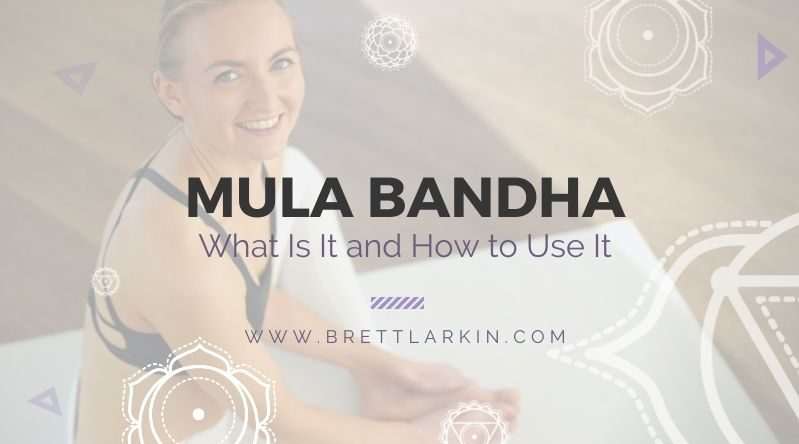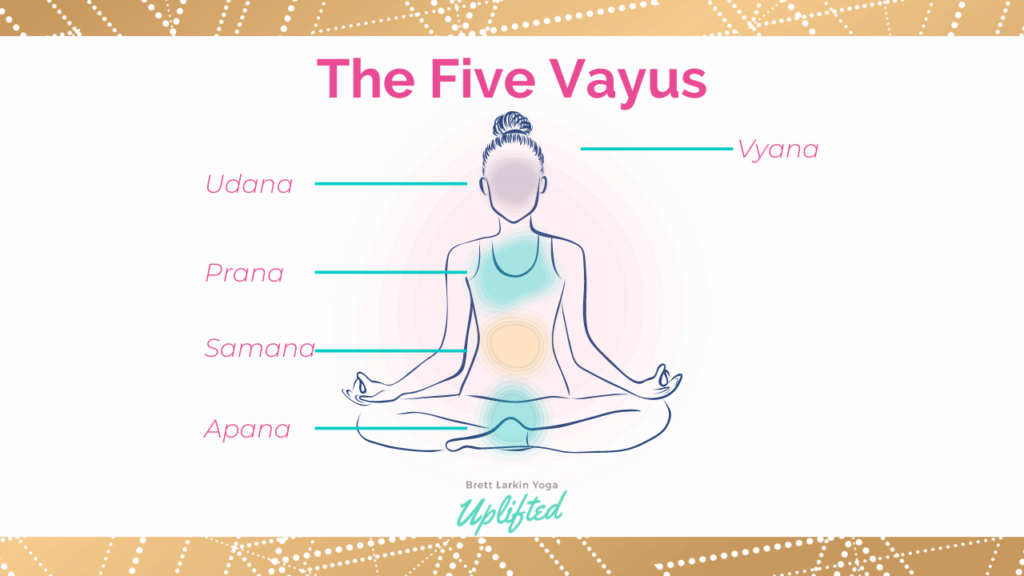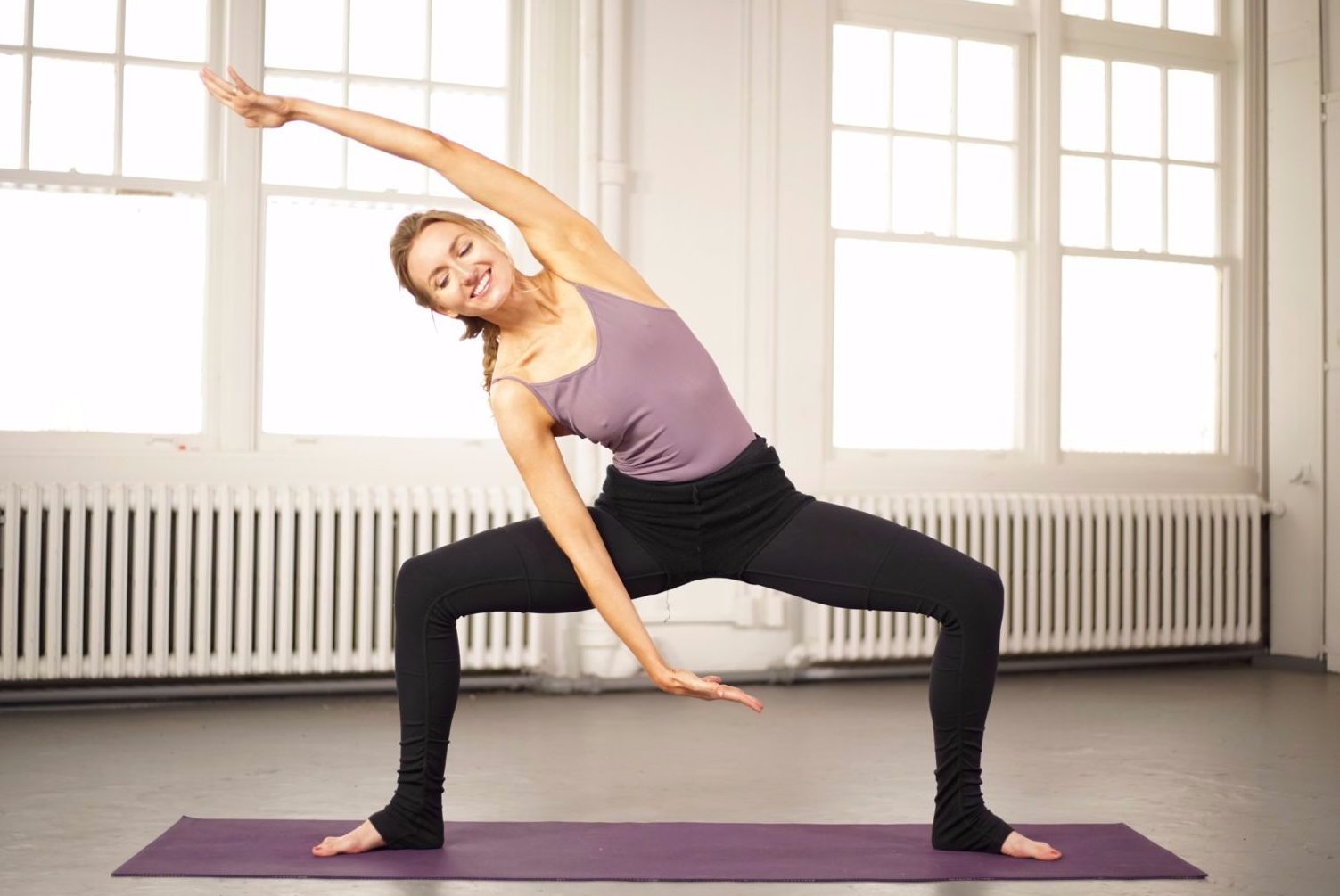
Feeling off balance in your yoga practice or want to strengthen your pelvic floor? You should try mula bandha!
Mula bandha, or root lock, is an important yoga practice, but its teachings are often left out of yoga class and saved for yoga training. Related to the root chakra, regular practice of mula bandha redirects energy in the body. This has a positive effect on the joints, particularly in yoga poses involving inversions and asanas including balancing that require a lot of weight bearing.
Practicing this bandha also strengthens the pelvic floor and overall pelvic floor muscles. Similar to performing kegel exercises, practicing mula bandha, can help lift, strengthen and engage the pelvic floor muscles, leading to more bladder control — ladies, you know what I’m talking about.
We will also touch on the other two major bandhas, jalandhara bandha and uddiyana bandha.
What is Mula Bandha?
Mula Bandha, or Root Lock, is one of the 6 main bandhas. Yoga teachers can often avoid this bandha in classes because it requires language around the pelvic floor, cervix and perineum. (Not exactly the most comfortable conversation for many!)
But it’s important to learn about the Mula Bandha when practicing poses that require that “weightless” feeling. If you’ve ever seen a yoga practitioner look like they are floating from the back of the mat to the front, or pop up into headstand effortlessly, they are probably engaging the Mula Bandha to help them do so.
Traditionally, bandhas were part of mudras, or hand gestures. The two are almost interchangeable in ancient texts like the Hatha Yoga Pradipika. However, bandhas are accompanied more in pranayama techniques.
Mula Bandha Meaning
Pronounced: Moo-lah Bahn-da, Mula meaning root and Bandha means lock, this Bandha relates to the root chakra, Mulandhara.
The Sanskrit word mula refers to root, as in a tree. As we know in English, root can have other meanings, such as the base of an object, or the origin of something. When we talk about Mula Bandha, we refer to the base of the torso.
The word bandha has many meanings, such as: block, restrain, and lock. At the same time, it also translates to “bond, connect, unite, join.” Think of it like bridging things together. When we unpeel the layers of practicing mula bandha, you’ll see how these opposing meanings make sense.
The Physical Mula Bandha
Anatomically, Mula bandha is associated with the perineum.
In men, this is located between the anus and the genitals, and can be engaged by contracting the muscles surrounding the perineal body.
In women, contracting the mula bandha is most prominent at the base of the cervix. Some suggest you can help train this contraction by applying light pressure beneath this area. Options include sitting on a soft, rolled sock, a specially designed cushion, or placing the heel of the foot in this area.
The muscles you engage are part of the pelvic girdle. The pelvic girdle looks similar to the form of a bowl, and consists of three fused bones—the ilium, the ischium, and the pubic bone. The pelvis is open at the bottom, leading to the perineum.
If you took an aerial view, the perineum is shaped like a diamond. The coccyx, or base of the spine, is at the rear, the pubococcygeus muscles at the front, and the two sit bones are at the left and right corners.
The Subtle Mula Bandha
There are three main subtle energy bodies commonly discussed in yoga. The Vayus (winds), the Koshas (layered sheaths), and the chakras (spinning wheels of energy). Let’s explore each of these.

Bandha practice subtly moves energy in our bodies in a way that moves along the vayus, which are each associated with different functions. Specific to Mula bandha, we tap into Apana Vayu, which relates to downward movement, the elimination of energy, and the lower abdomen and pelvic floor.
From an energetic standpoint, we also tap into the koshas or the five layered sheaths that move from the outermost layer of skin to the deep spiritual core. The kosha we most identify with during bandha practice is pranamaya kosha, or the energy layer, associated with life force energy.
When it comes to chakras, Mula bandha activates the Muladhara chakra or root chakra. By physically and energetically moving energy from this area, you generate both grounding and uplifting energy. This then helps with your feeling of safety, balance, belonging, and self worth.
The Bandhas
There are three bandhas that we call the major bandhas, though there are other more subtle ones too. Let’s take a look at the major bandhas.
Mula Bandha (the one we’re talking about here!): The Mula bandha, or root lock, is connected to the Muladhara chakra and relates to creativity and desire. It strengthens the pelvic floor and can help with depression and health.
Uddiyana Bandha: This abdominal lock, or upward lock, strengthens your internal organs and stimulates your digestive system. By creating a “lock” at the abdomen — pulling the diaphragm inward and lifting it up — this lock draws blood flow from the area of the abdominals to the areas of the back of the chest and heart.
The Jalandhara Bandha: The chin lock, is often used with pranayama, and helps to focus the mind while placing attention on the breath. This bandha relieves stress, anxiety and anger, while balancing the thyroid and regulating the metabolism.
Bandha work is not only used in asana practice, but prepares your mental energy for the higher limbs of the 8 limb yogic path.
Why Practice Mula Bandha
Mula bandha compliments asana, pranayama and meditation. It provides a seamless transition between breath practice and meditation. Let’s take a look at some benefits to this practice.

Create a Solid Foundation
Physically, practicing mula bandha creates supportive musculature for the pelvis. This increases the stability of the pelvis and supports safe spinal movement. You ultimately strengthen and form a solid foundation that becomes the root of any movement.
Calm the Sympathetic Nervous System
Some yogis say that when practicing this bandha in addition to asana, it reduces the stimulation of the sympathetic nervous system — reduction in blood pressure and heart rate, lowered respiration rate, and improved digestion.
Other benefits around this include regulated menstrual periods and balanced urogenital function (AKA peeing and reproductive parts). Full disclosure: there has not been scientific research to prove these exact physical benefits specifically in connection to mula bandha, but they are anecdotal benefits that some yogis have cited.
Direct Energies Toward Enlightenment
This bandha creates a lightness in the body. When practiced regularly and properly, the body is less earth-bound and more mobile. This not only helps yoga practice, but increases the pranic level, and activates sushumna nadi, inviting in consciousness. The spinal column is prepared for an upward energy toward enlightenment and, when used properly, can awaken kundalini energy.
Pelvic Floor and Bladder Control
Like any muscle you would flex at the gym, practicing the engagement of the pelvic muscles, attains strength and tone in the pelvic floor. As we age, the anal sphincter and urethral sphincter can lose the ability for retention. Muscle fibers start to thin, so beginning the practice earlier in life will help attain healthy pelvic floor function.
How To Practice Mula Bandha
If you are new to this practice, going step by step multiple times may be helpful. The important thing is to relax, be patient and know that your ability to practice will improve over time.
- Begin in a seated position, preferably cross legged. Breathe slowly, allowing the body and mind to become present. Squeeze the perineal region—front, middle, and back—inward and upward.Keep the breath steady and when the contraction is complete, release it slowly. Repeat 25 times.
- Next, contract all the muscles of the perineum and hold to a capacity that is comfortable for you. While the tension is being held, continue to breathe slowly and sense the back of the contraction; the area closest to the anus. Then move your awareness to the central channel of the contraction at the perineal body or cervix. Finally bring awareness to the front of the contraction; the urogenital area. Tighten each area as you focus on it, feeling the sensations there. Release the entire contraction — back, middle, front — slowly, and relax.
- Begin to tighten the contractions at the same time with the breath. On an inhale, contract the perineum. On an exhalation, release the tension. Ensure, that the contractions coincide with the intake of prana. This will improve over time. During this practice, start to focus on the middle of the perineum, placing awareness on the mula bandha. Repeat this exercise 25 times.
- When you feel ready, bring your attention on the center of the perineum, the mula bandha, and contract the muscles there tightly with little contraction of the front and back of the perennial regions (anal and urogenital areas). This will take some time to get used to. This may feel overwhelming at first, so be patient and gentle with yourself while trying.
- Once you are able to stabilize the breath during this specific contraction while other muscle tensions are relaxed, experiment with holding mula bandha comfortably for a period of time. Finally, it can be held during pranayama and meditation.
Mula Bandha Contraindications
While mula bandha is important for everyone, there are some situations it’s not good with.
The primary consideration is pregnancy. This isn’t a nonnegotiable “don’t do this,” more of a “hey, you should probably think about this,” type of thing. Ashtanga yoga experts, Dr. Melanie Steiner and Dr. Ronald Steiner note that practicing mula bandha during pregnancy can be helpful. However, Baby Centre notes that breath retention can limit oxygen to the baby and recommends that any sort of breathwork should be with a trained instructor.
At the end of the day, no practice is one size fits all. It’s important to take into consideration special circumstances, personal needs, and advice from medical professionals to keep you safe and healthy.
Next Steps
- If you’re interested in practical kriya yoga as a way to improve your daily life and relationships, check out my Yoga for Self Mastery course.
- Order my Yoga Life book for a practical guide to creating balance in your life through yoga.
- Check out my YouTube channel and find some yoga classes that you can try out for yourself!
Experience 3 Training Videos from Inside My 200-Hour Online YTT

YOU MIGHT ALSO LIKE
- What is Kriya Yoga? The Philosophy and Practice
- Uddiyana Bandha: Tapping Into Your Deep Core
- 4 Reasons Hasta Bandha Is Essential To Your Yoga Practice
- Vitarka Mudra: What It Is and How Do You Use It?
- Shakti Mudra: What It Is and How Do You Do It?
- Garuda Mudra: What It Is and How Do You Use It?
- Kali Mudra: What It Is and How Do You Do It?
- Shunya Mudra: What It Is and How Do You Do It?
- Varuna Mudra: What It Is and How Do You Use It?
- Vayu Mudra: What It Is and How Do You Use It?
- Samana Vayu: The Energy of Balance & How to Access It
- Apana Vayu: The Energy of Release & Surrender
- Udana Vayu: The Ascending Wind
- Prana Vayu: The Breath of Vitality
- Vyana Vayu: The Energetic Secret to Flow
Learn how to do 11 of the most popular yoga poses correctly. Free video + PDF download.










